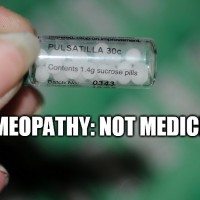Itasca, IL – In response to requests from the American Academy of Pediatrics (AAP) Section on Breastfeeding and Baby-Friendly USA (BFUSA), the next edition of the Neonatal Resuscitation Program (NRP) will include recommendations on the diagnosis and management of “tongue-tie”, also known as ankyloglossia, at the time of delivery.

Appropriate NRP technique for opening the airway and assessing for tongue-tie
“Resuscitation of the newborn is nuanced and multifaceted,” BFUSA Board of Directors Chair Theresa Landau explained. “We aren’t asking for there to be a delay in providing effective ventilation, at least not yet, but the evidence is overwhelmingly clear that breastfeeding provides optimal nutrition and should be encouraged at every step of the process.”
As part of the upcoming 8th edition of the program, which is jointly sponsored by the AAP and the American Heart Association, a new lesson module will cover the basics of assessing for the presence of ankyloglossia during the initial steps of resuscitation. If a baby does not respond to stimulation and suctioning of the mouth and nose, positive pressure ventilation using a bag and mask or aided by the placement of an endotracheal tube is still recommended. Once the baby is breathing without assistance and has a heart rate greater than 100 beats per minute, corrective measures should be considered. The most common corrective measure, a procedure known as a frenotomy, typically involves using sterile scissors to snip the tight attachment between the tongue and the floor of the mouth. This has been shown in some studies to be associated with improvements in breastfeeding in a percentage of the participants.
(M)ask adjustment
(R)eposition airway
(S)uction mouth and nose
(O)pen mouth
(P)ressure increase
(A)lternative airway
(F)renotomy
(“MR.SOPAF” mnemonic for corrective measures during resuscitation from the NRP 8th edition)
Several additional changes to the NRP guidelines will further support breastfeeding. These will include maintaining direct skin-to-skin contact between the newborn and mother while placing an endotracheal tube or umbilical vein catheter and offering counseling on the benefits of breastfeeding over infant formula during the first minute after delivery of all infants born at less than 32-weeks gestation. Some experts, like Billy Gilravey, MD, a surgeon who specializes in laser-frenotomy in breastfeeding newborns, think that the new guidelines don’t go far enough. “Pediatricians are fools if they think that we should be waiting until birth to manage ankyloglossia!”
It is not uncommon for new editions of the NRP to include major changes. Based on mounting evidence against the practice, the prior update recommended against routine tracheal suctioning of non-vigorous newborns when the amniotic fluid is found to contain meconium, which is the medical term for an infant’s first stool. According to AAP President Colleen Kraft, MD, FAAP, pediatricians will likely be quick to adopt the latest guidelines as well. “Pediatricians care for children who are developing, who are rapidly achieving new milestones as they age. You might say that we are experts in change.”

